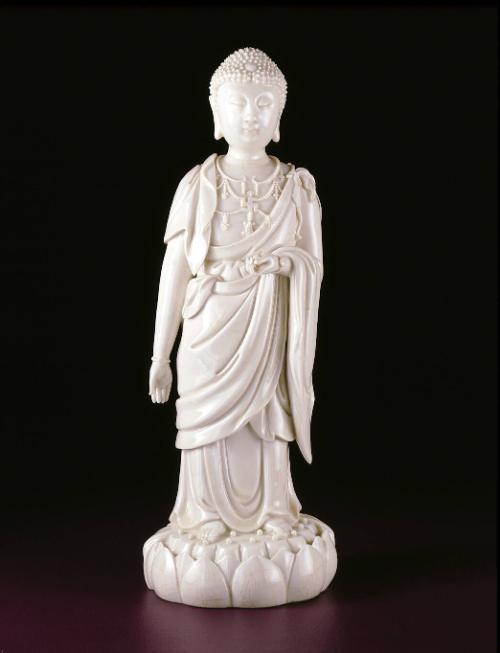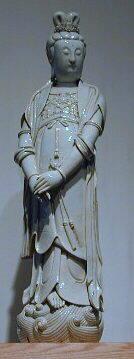Ratnasambhava Buddha
Date17th century
PeriodMing dynasty (1368–1644)
CultureChinese
MediumDehua ware; porcelain with transparent glaze
ClassificationCeramics
Provenancewith Ira Koger; gift to The John and Mable Ringling Museum of Art, 2001
Credit LineGift of Ira and Nancy Koger, 2001
Object numberSN11122.69
Eyes downcast with a calm expression, this Buddha stands upon a lotus flower pedestal holding a jewel in the left hand and forming a welcoming gesture called the <i>varada mudra</i>, with the right. He wears modest robes, and on his chest in low relief is a swastika, an auspicious emblem linked with longevity, whose use in Hindu and Buddhist symbolism predates by hundreds of years its 20th-century associations with hate. A swastika on the chest is one of multiple attributes of the Buddha, which also include the radiant curl of hair in the center of the forehead (<i>urna</i>), cranial protrusion (<i>usnisa</i>), and elongated earlobes visible on this icon.
On View
On viewLocation
- Center for Asian Art, 3rd floor, Lobby, Case A
Collections
early 17th century
late 18th-19th century
early 18th century
17th-18th century
17th century
17th century













